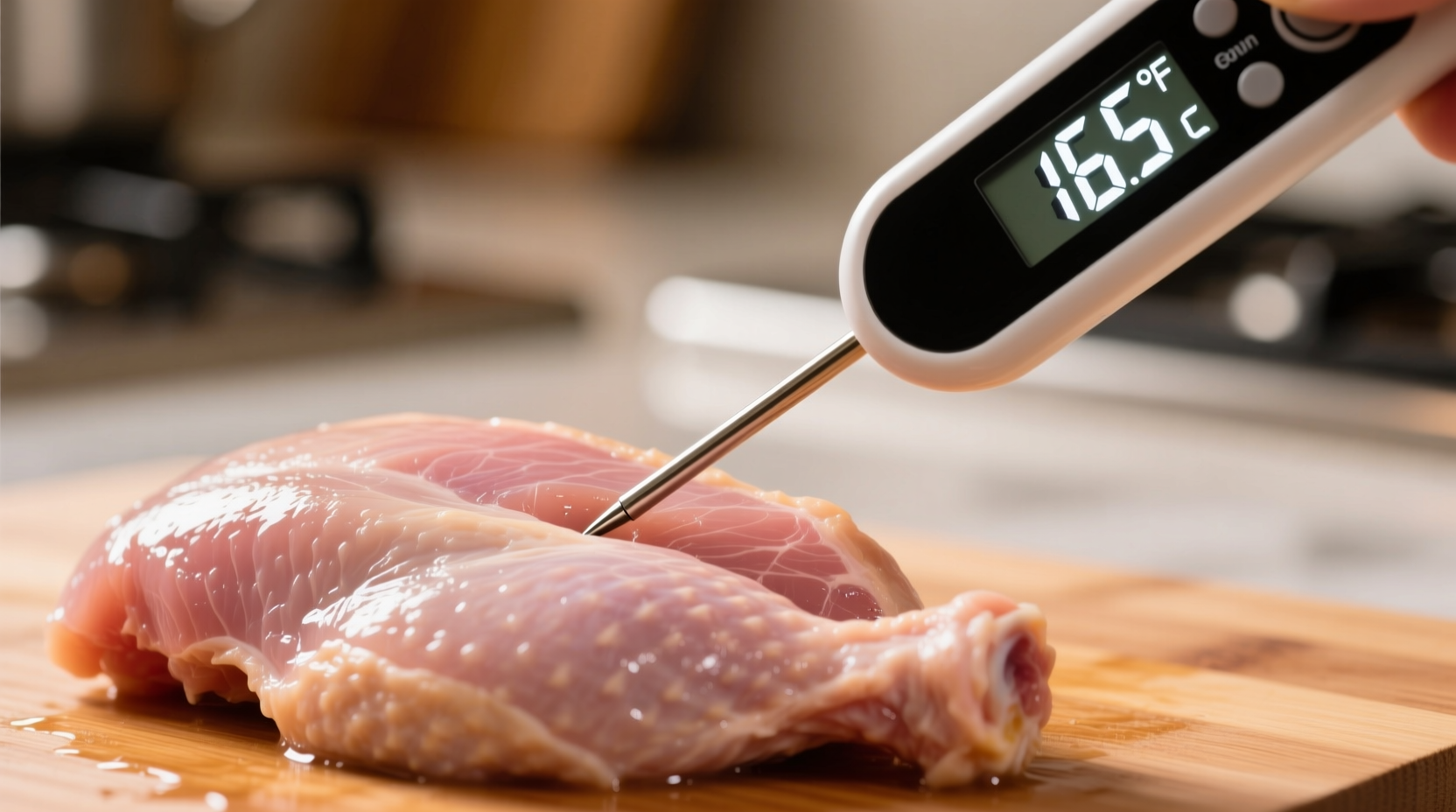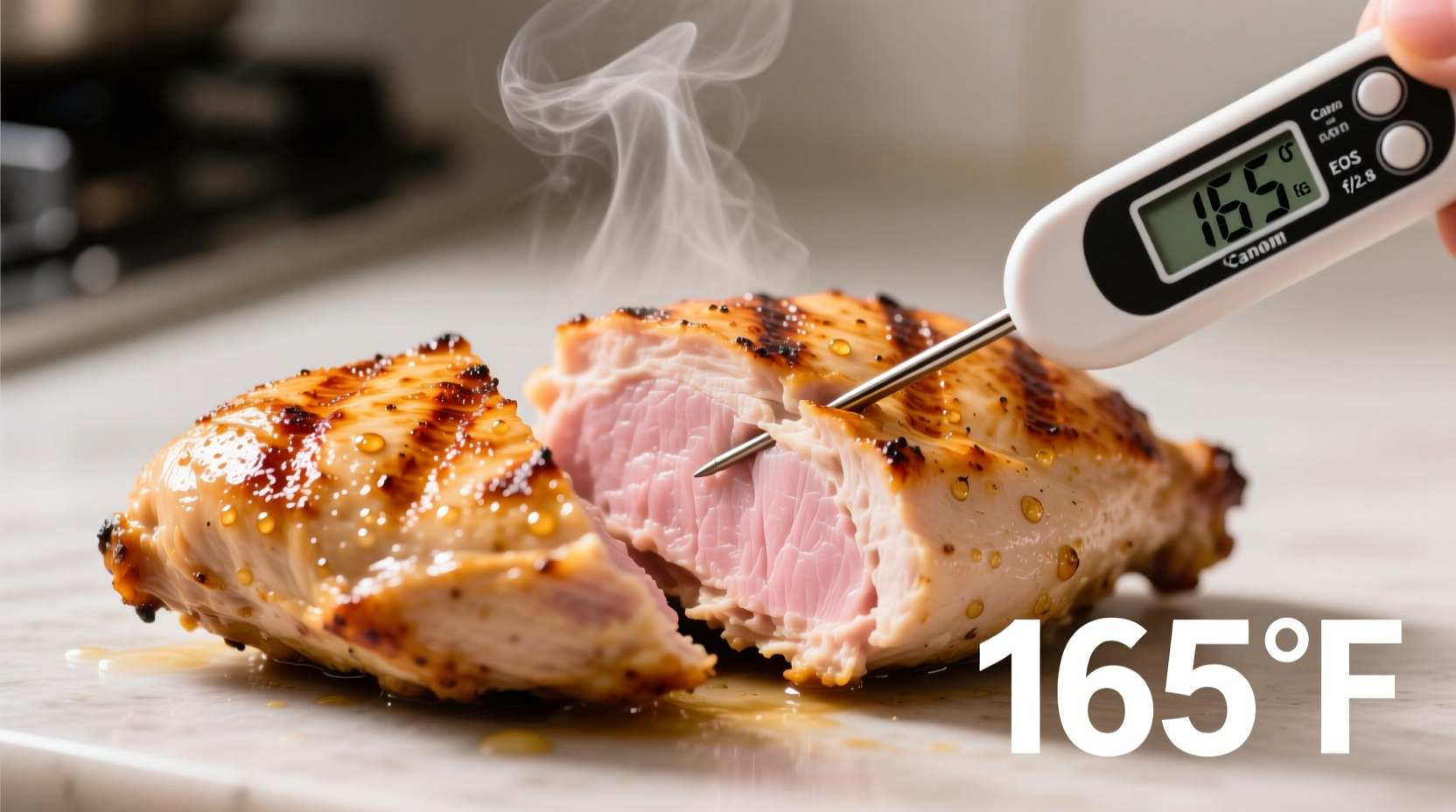Getting chicken temperature right isn't just about following rules—it's your most reliable defense against foodborne illness while ensuring juicy, flavorful results. As a professional chef with extensive food safety training, I've seen how minor temperature variations can transform a meal from perfect to problematic.
The Critical Importance of 165°F for Chicken Safety
Unlike visual cues that can deceive even experienced cooks, temperature provides objective verification that chicken has reached a safe state. At 165°F, harmful pathogens that commonly contaminate poultry are instantly destroyed. This critical threshold represents the point where both Salmonella and Campylobacter—the most dangerous bacteria associated with raw chicken—are eliminated.
"Many home cooks rely on color or texture to determine doneness, but these methods are dangerously unreliable," explains Antonio Rodriguez, culinary expert specializing in food chemistry. "The only foolproof method is using a properly calibrated thermometer."

How Different Chicken Cuts Require Different Approaches
While the safe temperature remains consistent at 165°F across all chicken types, different cuts present unique challenges:
| Chicken Cut | Recommended Target Temperature | Special Considerations |
|---|---|---|
| Breasts | 160-162°F (remove at 155°F) | Remove from heat at 155°F to prevent drying out during resting |
| Thighs & Drumsticks | 165°F | Darker meat can handle slightly higher temperatures without drying |
| Whole Chicken | 165°F in multiple spots | Check breast, thigh, and wing joints; cavity temperature matters |
| Ground Chicken | 165°F | Surface bacteria distributed throughout; no carryover cooking benefit |
Proper Thermometer Technique: Where and When to Measure
Even with the right temperature target, improper thermometer use leads to inaccurate readings. Follow these professional techniques:
- Insert correctly: Place thermometer tip into the thickest part of meat, avoiding bone, fat, or gristle
- Check multiple spots: Especially for larger pieces or whole birds, verify temperature in several locations
- Final check timing: Measure temperature just before removing from heat source for best accuracy
- Wait for stabilization: Allow 10-15 seconds for digital thermometers to register final temperature
Understanding Temperature Evolution: From Raw to Safe
Food safety guidelines have evolved significantly as our understanding of pathogen destruction has improved. This timeline shows key developments:
| Year | Recommended Temperature | Scientific Understanding |
|---|---|---|
| 1980s | 180°F+ | Limited pathogen research; focused on visual doneness |
| 1990s | 170°F | Early pathogen studies showed lower temperatures could be safe |
| 2006 | 165°F | USDA established current standard based on precise pathogen kill data |
| Present | 165°F | Confirmed by multiple international food safety organizations |
Contextual Boundaries: When Standard Guidelines Need Adjustment
While 165°F remains the universal safety standard, certain cooking methods require nuanced understanding:
- Sous vide cooking: Chicken can be safely cooked at lower temperatures (145°F) for extended periods (at least 30 minutes), as documented by the FDA Food Code
- Resting period: Temperature continues rising 5-10°F after removal from heat—remove breasts at 155-158°F for perfect results
- Smoking: Must reach 165°F internally despite lower cooking temperatures
- Commercial settings: Restaurants follow identical safety standards as home kitchens
The USDA Food Safety and Inspection Service maintains that all poultry must reach 165°F to ensure safety, regardless of cooking method. This position aligns with the FDA Food Code and international food safety organizations.
Practical Temperature Verification: Beyond the Thermometer
While thermometers provide definitive verification, these secondary indicators confirm proper cooking:
- Juices run clear, not pink or red
- Meat separates easily from bone
- Firm texture when pressed (not rubbery or soft)
- White or opaque appearance throughout (not translucent)
Remember: These visual cues should supplement thermometer use, never replace it. Undercooked chicken may appear done while still harboring dangerous bacteria.
Temperature Danger Zone: The Critical Window for Bacterial Growth
Understanding the temperature danger zone helps prevent foodborne illness:
- 40°F to 140°F: Bacteria multiply rapidly (doubling every 20 minutes)
- 140°F to 165°F: Bacteria begin dying but may survive
- 165°F+: Pathogens destroyed instantly
Minimize time chicken spends in the danger zone during preparation, cooking, and storage. Never partially cook chicken and finish later—this creates ideal conditions for bacterial growth.
Common Temperature Mistakes and How to Avoid Them
Professional kitchens see these temperature errors repeatedly:
- Mistake: Checking temperature too early during cooking
Solution: Wait until chicken is nearly finished before first temperature check - Mistake: Not calibrating thermometers regularly
Solution: Test thermometers in ice water (32°F) or boiling water (212°F) weekly - Mistake: Relying on oven temperature alone
Solution: Always verify internal meat temperature regardless of cooking time - Mistake: Not cleaning thermometer probes between checks
Solution: Sanitize probes with alcohol wipes when checking multiple pieces
Essential Tools for Perfect Chicken Temperature Every Time
Invest in these temperature tools for consistent results:
- Digital instant-read thermometer: Thermapen or similar for quick, accurate readings
- Leave-in probe thermometer: For monitoring temperature during roasting or smoking
- Calibration kit: For maintaining thermometer accuracy
- Reference chart: Keep USDA temperature guidelines visible in your kitchen
"The $20 thermometer pays for itself the first time it prevents food poisoning," notes Rodriguez. "It's the most important tool in your kitchen for both safety and quality."











 浙公网安备
33010002000092号
浙公网安备
33010002000092号 浙B2-20120091-4
浙B2-20120091-4